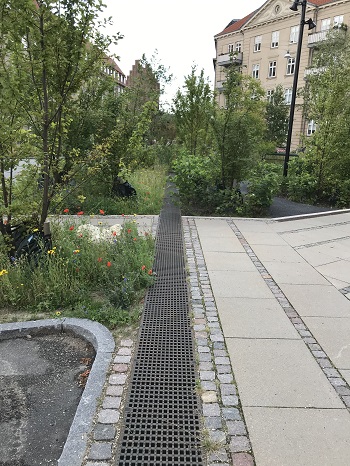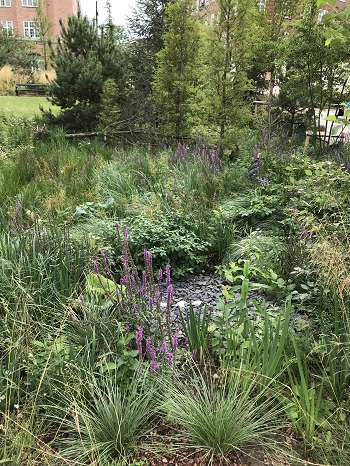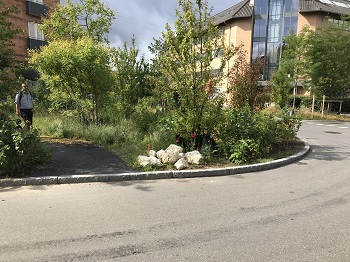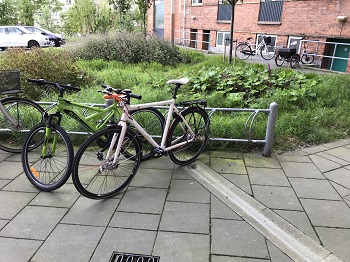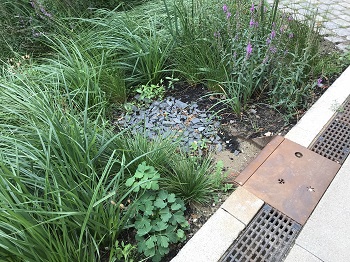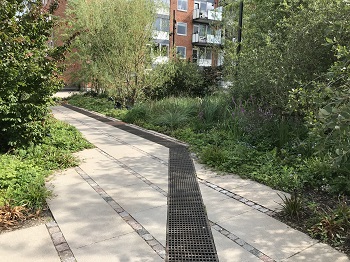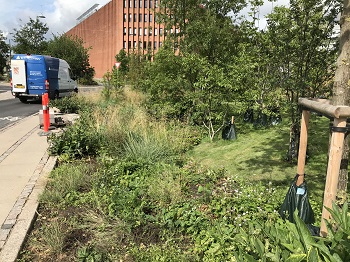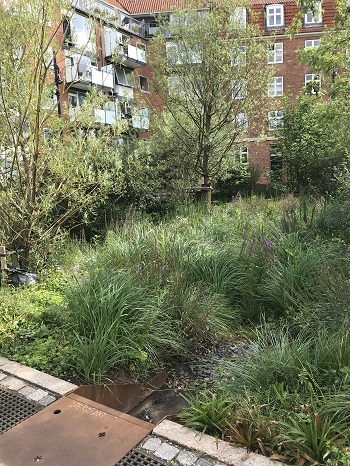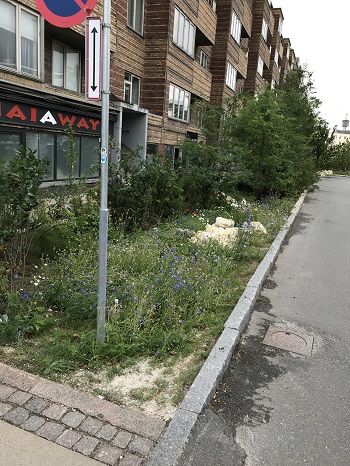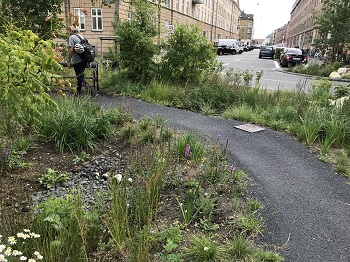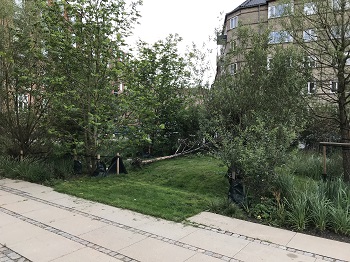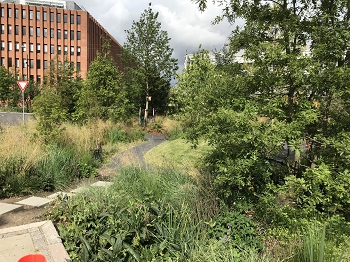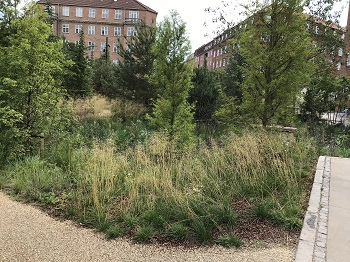Infiltration of stormwater water in raingardens in Bryggervangen / Sct. Kjeld's neighborhood, Copenhagen
In connection with the climate adaptation of Copenhagen, Bryggervangen is being transformed into a new climate district. A large part of the solid fortifications are removed and 30% of the rainwater is handled on the surface in green areas/raimgardens where it is infiltrated. In the case of a cloudburst, the excess water is routed via cloudburst roads and pipes to the harbor. Instead of using salt in the winter months, the intention is to use Potassium format in the area to remove ice and snow, which allows infiltration in green areas to a much greater extent. The project works with the First Flush method, which leads the first dirty stormwater on the roadway into the sewer, but then leads the subsequent clean water (Second Flush) for infiltrate in green areas.
Bryggervangen and Skt. Kjelds Plads will appear as a coherent and green urban space. A green 'spring' across the neighborhood, which will bring lush nature into the city and create a better connection between the Common Park and the Source Park. The project defines a special Copenhagen urban nature that learns from characteristic Copenhagen biotopes such as Utterslev Mose, Kongelunden and Amager. The result is an urban nature that is at once aesthetic and functional, biodiversity and sustainable, wild and urban. An urban nature that gives Copenhageners a strong aesthetic sense of nature right outside their front door.
Photos